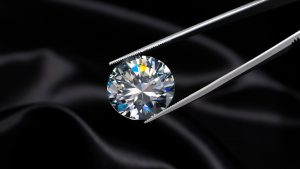
Lab Grown diamonds are becoming popular in the world today. Many of the jewelry sold in stores and online is made of them. There also has been a significant increase in the demand for these types of diamonds in recent years. But you might be wondering how these diamonds come up, right?
This article will answer all your questions about how Lab Grown diamonds emerged. It will take an in-depth look at everything you should know about them. This will make it easier to decide if they’ll be a good option when buying diamond jewelry. Read to the end to know all about Lab Grown diamonds.
Understanding Lab Grown Diamonds
It will help first to understand what Lab Grown diamonds are in detail. These are diamonds grown in laboratories under controlled environmental conditions. Diamond manufacturers use extreme temperature and pressure to make Lab Grown diamonds similar to natural ones.
One of the primary properties they keep in mind is its hardness. Both mined and Lab Grown diamonds ranked 10 on the Mohs Hardness Scale. The extreme conditions used in labs help harden Lab Grown diamonds as much as the mined ones.
We know that natural diamonds come with inclusions and other flaws. But, inclusions don’t mean a diamond is of low quality. It is normally found on mined diamonds since they result from its formation process on the Earth’s mantle. Thus, it is extremely rare to find a natural diamond without any inclusion at all.
However, for Lab Grown diamonds, inclusions are minimized since they grew in controlled environments. But how exactly are they made?
How Lab Diamonds Are Made
We have already mentioned a few things about how Lab Grown diamonds are made. One of the significant points to note is that the formation processes aren’t any different. Lab conditions for creating diamonds mimic the natural diamond formation environment to produce a similar result.
The only difference between these two is in the time of formation. Natural diamonds exist in the earth, were formed years ago, and take time to mine. However, it takes a few weeks to create Lab Grown diamonds and ensure they are ready for the market, just like natural diamonds.
There are two primary processes used in making Lab Grown diamonds. The High Pressure-High Temperature method (HPHT) is the most popularly used in labs. And you can also use the Chemical Vapor Deposition (CVD) method and get the same results.
The Emergence of Lab Grown Diamonds
You might be wondering how lab grown diamonds came to be. Why do people need to create diamonds in the lab while they can mine natural diamonds? Many problems have led to the massive shift to lab created diamonds. They include:
1. Mined Diamonds are Unethical
Mined diamonds have a history of violence. Some mining activity has happened in conflicted lands, and even people opposed to mining were killed to pave the way. Many people didn’t want to get linked to this dark history. Thus, industry players provided Lab created diamonds as an option.
2. Mining Diamonds Gives Negative Environmental Impact
It hasn’t been easy to control natural diamond mining. Improper mining practices lead to a wide range of environmental damages. For instance, they cause soil erosion, deforestation, water pollution, etc. These effects made it critical to find an eco-friendly alternative diamond source.
3. Diamond Mining Sites Practice Unfair and Child Labor
Working in a diamond mine isn’t an easy task. It involves carrying heavy gravel and panning through it to find tiny diamonds. Sadly, children aged between 5 and 16 years provide cheap labor in these mines.
Diamond mines are also popular for practicing unfair labor. Usually, their workers aren’t equipped with proper safety gear on top of being underpaid. Cultivating diamonds in labs is meant to prevent these issues.
4. Mined Diamonds are Expensive
Natural diamonds are more expensive than Lab created ones. This isn’t because of quality, but because of the lengthy process and high costs of mining them. These costs trickle down to the consumer. Industry players discovered Lab created diamonds as a more cost-effective option.
Are Lab Grown Diamonds Real Diamonds?
This is one of the most common questions asked by beginners in the diamond industry. As said before, many people think that Lab created diamonds aren’t real. But the reality is that they are real diamonds, and you cannot differentiate them by looking because they’re all the same.
Besides looking, you cannot differentiate these two chemically. Their similarities go beyond their physical looks. Even a lab test will show that both are diamonds with the same properties. If you want to know if a diamond is natural or Lab created, you’ll have to look at the certificate.
This makes jewelry made from Lab created diamonds a perfect alternative to natural ones. The factor to consider here is cost. If you are working on a budget, paying less for jewelry made from Lab Grown diamonds makes sense. This will save you a significant amount of money.
Choosing the Best Lab Grown Diamond

Shopping for diamond jewelry isn’t as easy as it might seem. It would be best if you kept various factors in mind to ensure you choose the best diamond within your budget. The good news is that there’s no difference between shopping for a Lab Grown diamond and shopping for a natural one.
Of course, one of the essential things to consider when choosing a diamond is its beauty. This is so especially when buying wedding day diamonds like wedding bands and other jewelry. You must keep beauty on top of your checklist guided by the 4Cs, i.e., cut, clarity, color, and carat weight.
These are the same factors that can help you choose the best natural diamonds. We have also mentioned diamond prices. Many unsuspecting beginners buy Lab created diamonds for the same prices as natural ones. Always keep in mind that Lab Grown diamonds aren’t that costly.
Will Lab Grown Diamonds Hold Their Value?
One factor every investor looks at is the value they get from a gemstone. Many ask how long the gem they’re buying will hold its value. The reality with diamonds is that they can retain their value for long. The best way to look at this is by looking at their history.
For decades, human beings have used diamonds as a store of value. This is because diamonds, like gold and other precious stones, do not lose value quickly. You can buy diamonds to store value or for luxury. Lab created diamonds can also store value, but they’re not ideal for investing.
But you also should note that storage and maintenance matter. You cannot expect a diamond to retain its value if you don’t store it well. Thus, you should invest in proper storage, have a good maintenance plan and even insure your diamonds for the best results.
How Has The Industry Reacted To Lab Grown Diamonds?
The diamond industry has grown over the years and is more established now. Anyone who’s been in it for some time knows what Lab created diamonds are. Thus, the industry hasn’t had issues embracing Lab Grown diamonds. They have been worth substituting for natural diamonds.
Also, other factors have led to the excellent reception Lab created diamonds have enjoyed. One is the fact that they’re eco-friendly, unlike natural diamonds that have an impact on the environment. The second is that they help prevent the entry of blood diamonds into the market.
Bottom Line
That’s all you need to know about Lab Grown diamonds. The good news about these diamonds is that they are authentic, not fake. Many people avoid buying diamond jewelry made from Lab Grown diamonds, thinking it’s fake. But there’s no difference between Lab Grown and natural diamonds.
If you are investing in diamonds, it’ll help to consider all types of diamonds. You might want to give Lab created diamonds more attention if you’re working on a budget. This is because they are cheaper and still provide the same value that you will get from natural diamonds.




